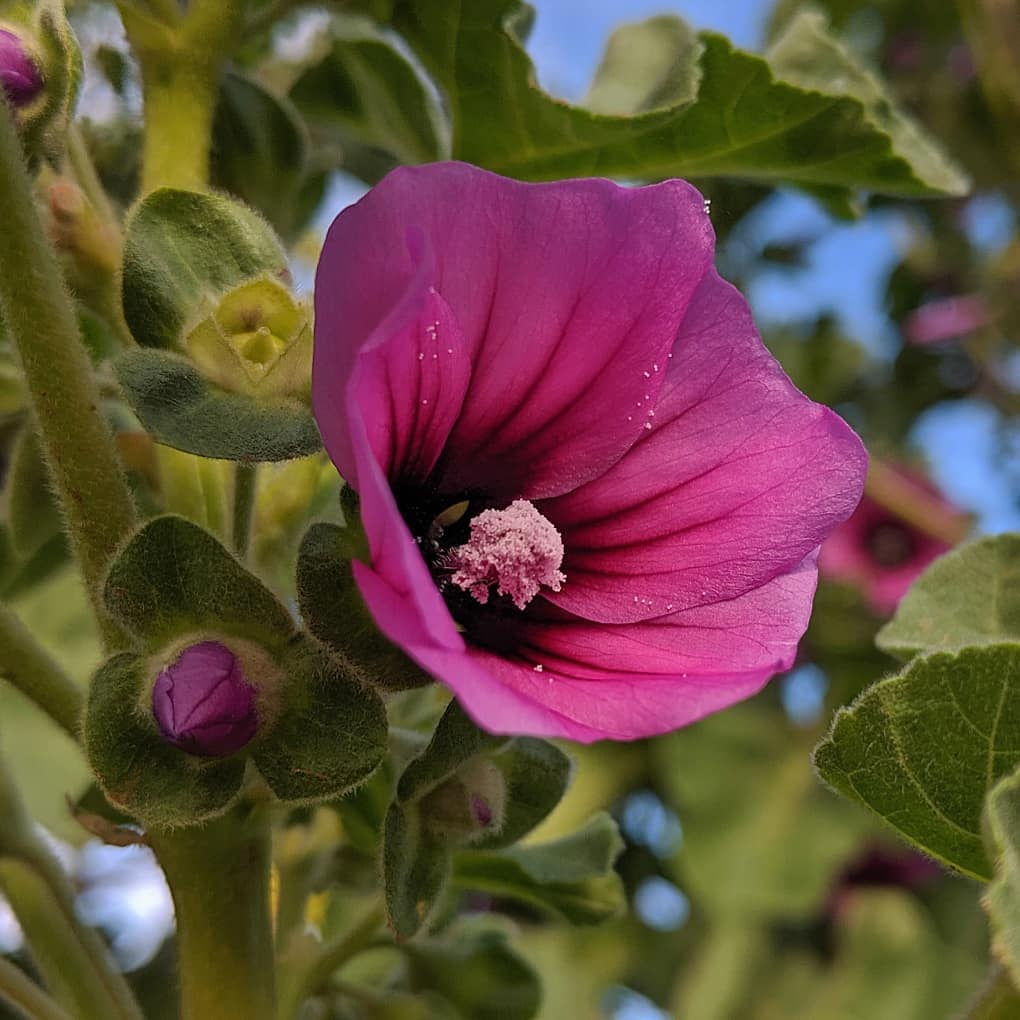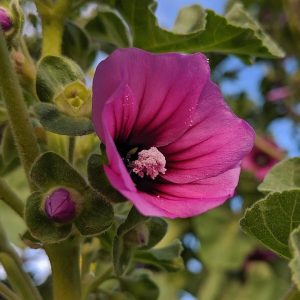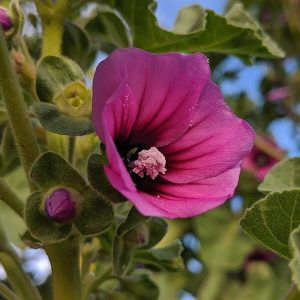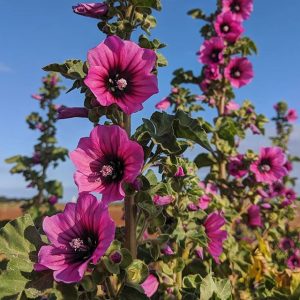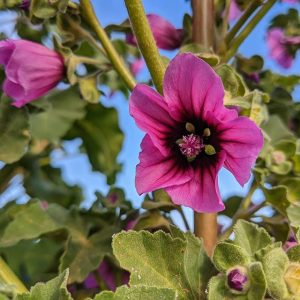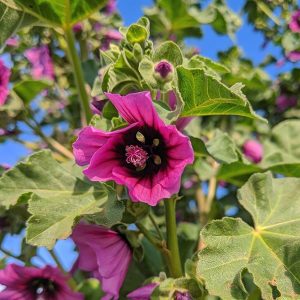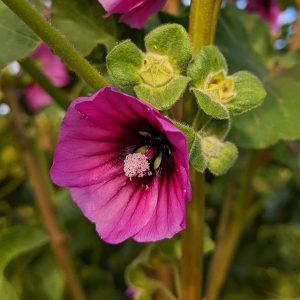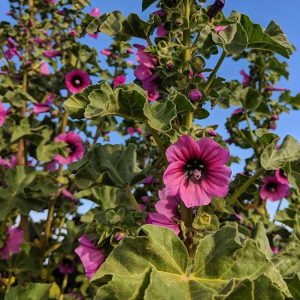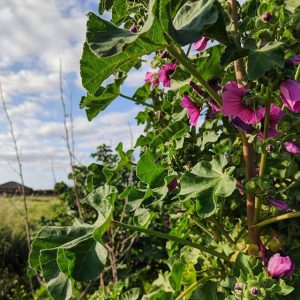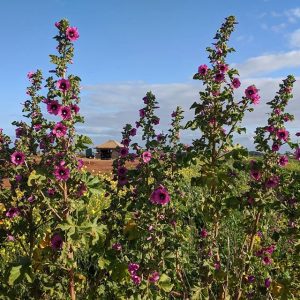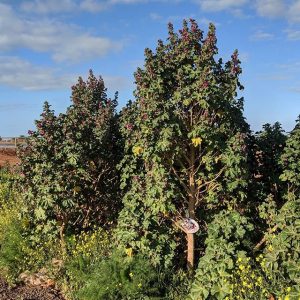Tree Mallow (Malva arborea), a Mediterranean coastal shrub. Described in 1859 as very common in Australian gardens, the plant offered instant vertical colour; an 1886 column called it ‘as handsome as almost any plant in flower.’
The species was of equal interest to the Acclimatisation set, for whom weediness was no barrier to irresponsible pursuit of untested economic suppositions. An exhibit of fibres from Tree Mallow was included in an 1862 special agricultural exhibition in Melbourne; 1865 letters from a ‘George Fred Brewster’ extolled the benefits of Tree Mallow as a fodder, claiming that ‘stock will forsake all other food for it… once established on barren ranges, it will maintain itself from its own seeds and grow where nothing else will.’
In the 1870s, the patron saint of botanical ‘should-have-known-better’ Ferdinand von Mueller included the plant in his acclimatisation missives: ‘The Tree-Mallow might easily be naturalized on our shores. Perhaps it might serve with allied plants for green manure.’
To what extent any of these agroeconomic uses were ever really tested is unclear; by the 20th c. it was ‘by no means uncommon in Victoria,’ with its leaves ‘sometimes used to pack soft fruits’ (1906), and later described as ‘sometimes used for hedges along the coast’ (1940). The first bona fide naturalised collection I can locate in the state was made near Frankston in 1943 (there are some older records from SA).
Tree Mallow is a serious threat to seabird populations across the southern coast of Australia, where it replaces key open and undergrowth nesting sites with unsuitable scrub canopy. It has also jeopardised the genetic distinction of the native coastal Mallow, Malva pressiana, with which it produces successful hybrids.
The weed can be found across Melbourne’s bay coastal, and on favorable geology within inland suburbs to the north and west. The photographed plants infest infrastructural edges of Werribee South’s irrigated market gardens, where they have proven both prolific and capable of achieving the ‘tree’ form for which the species is named.
View Original Post on Instagram
Search for information about Malva arborea in the Flora of Victoria
View information and occurrences of Malva arborea on the Atlas of Living Australia
